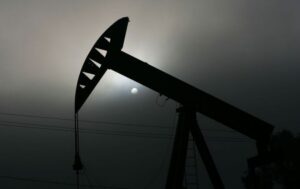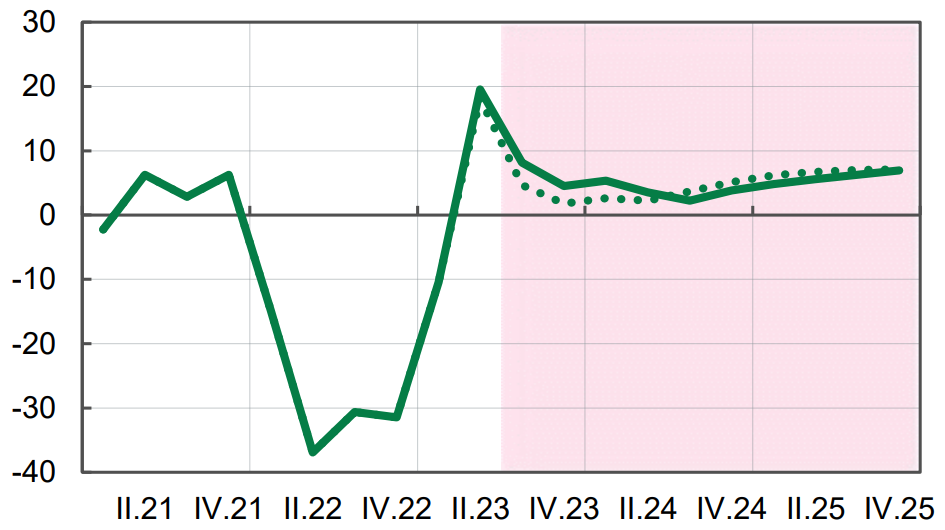
Modern diagnostic methods, new NCCN guidelines, achievements of world medical science in oncology, real cases and practices of the Ukrainian medical community – all these and other important issues were discussed at the largest event of the year in the field of oncology – the annual 4th Oncology Congress “Up-to-date 4.0 + Molecular Meetings”.
This year’s oncology congress was held in fruitful cooperation of leading medical institutions with deep expertise in oncology. The event was organized by the Ministry of Health of Ukraine, the Ukrainian Society of Clinical Oncologists (USCO) – OncoHUB, the National Cancer Institute, CSD LAB Medical Laboratory and the Global Medical Knowledge Alliance (GMKA).
The event took place on November 23 and 24 in the capital of Ukraine, at the Parkovy Exhibition and Convention Center, and brought together more than 800 doctors of various oncology specializations from all over the country.
The event was opened by Viktor Lyashko, Minister of Health of Ukraine, Olena Yefimenko, Director General of the National Cancer Institute, Oleksandr Dudin, Managing Partner of CSD LAB, and Andriy Beznosenko, Chairman of ONCOHUB.
The main thesis of Viktor Lyashko was the statement about the need to provide high-quality and modern medical care that meets the current challenges of Ukraine. After all, a full-scale invasion unfortunately leads to an increase in the number of cancer patients. Therefore, there is an urgent need to update not only clinical guidelines, standards and protocols, to develop technical equipment of medical institutions, but also to work together to improve the knowledge and competencies of doctors, to attract best practices and methods.
“The conference “Up-to-date 4.0 + Molecular Meetings” is our new step towards an even larger-scale realization of the common goal of CSD LAB Medical Laboratory and our colleagues at OncoHub: to unite doctors to share knowledge, advanced technologies, experience and new opportunities. They should help the doctor to be more effective, and the patient to get a chance to survive and improve the quality of life. And this is very important, because despite the availability of opportunities for accurate diagnosis and treatment, Ukraine still remains in the top countries in terms of cancer mortality,” said Oleksandr Dudin, Managing Partner of CSD LAB Medical Laboratory.
“The event is aimed at bringing Ukrainian doctors closer together, giving us the opportunity to share new research and personal experience. For the first time, we have expanded the horizons of our program to include molecular oncology, which is aimed at a deeper study of the molecular aspects of oncology. This is a unique opportunity for the medical community to gain insights into current trends and interact with recognized experts. Also, for the first time, a section on radiation oncology was held for a comprehensive multidisciplinary approach in the daily clinical practice of oncologists,” commented Andriy Beznosenko, Head of Oncology Hub.
This year’s program “Uptodate 4.0 + Molecular Meetings” included more than a hundred reports from leading doctors from Ukraine, the USA, France, Latvia, Armenia, Slovakia, Germany and Israel. The conference brought together surgeons, clinical oncologists, pathologists, geneticists and public activists, as well as all those who want to be more knowledgeable about oncology.
“To realize our goal of raising awareness about timely diagnosis and personalized treatment tactics, we need to be in constant communication with the medical community and the public. And, most importantly, to encourage people to take care of their health in time to prevent diseases or detect them at early stages with a much higher chance of successful treatment. And CSD LAB provides a full range of diagnostic solutions that are required for this, in accordance with international protocols,” added Oleksandr Dudin, Managing Partner of CSD LAB Medical Laboratory.

Benchmark oil prices are moderately rising on Tuesday morning after declining a day earlier.
The price of January futures for Brent on the London ICE Futures exchange at 9:55 a.m. is $80.08 per barrel, which is 10 cents higher than at the close of the previous session. On Monday, these contracts fell by 60 cents (0.7%) to $79.98 per barrel.
Quotes for January futures for WTI in electronic trading on the New York Mercantile Exchange (NYMEX) by this time increased by 8 cents to $74.94 per barrel. At the end of the previous session, they fell by 68 cents (0.9%) to $74.86 per barrel.
Market participants remain focused on the meeting of OPEC+ ministers to be held on November 30, which was postponed from November 26, according to media reports, due to disagreements within the group.
The OPEC+ meeting will be the most important event this week “not only because any decision will have direct implications for prices and inflation, but also because the meeting has already been postponed for four days,” said Craig Earlam, senior analyst at OANDA.
Phil Flynn, senior analyst at Price Futures Group, warned that Angola and Nigeria’s desire to produce more oil, which was reported in the press, could irritate Saudi Arabia, and the country would refuse to voluntarily cut production, “flooding the global oil market.”
Market participants see a 68% probability that OPEC will not change its production target at the next meeting, and a 25% chance that it will be increased, according to the CME Group’s OPEC Watch Tool.
Real GDP in 2021-2025 (forecast)

Source: Open4Business.com.ua and experts.news

Speaker of the US House of Representatives Mike Johnson said that Washington would provide additional funding for Kyiv, Politico reports.
“I think it will all come together in the coming days. I’m confident and optimistic that we can do it – get it done,” he said.
Johnson said that there is a sense of urgency in getting aid to both Israel and Ukraine, adding that there is “a lot of thoughtful negotiations going on among members of Congress.”
The speaker also said that assistance to Israel is a top priority for the United States and called assistance to Ukraine another priority.
“Of course, we can’t let Vladimir Putin march through Europe, and we understand the need to provide assistance there (Ukraine – IF-U),” Johnson said.
He explained that if Ukraine needs additional assistance, which most members of Congress consider important, then it is also necessary to work on changing US border policy.

Starting December 10, Hungarian Railways will launch a new daytime direct train No. 143/146 Vienna – Chop – Vienna, which will provide convenient connections to Ukrainian night trains to Kyiv and Lutsk via Lviv and Rivne, Ukrzaliznytsia reported on its Telegram channel on Friday.
It is noted that the cost of a ticket from Kyiv to Vienna (2nd class seat car + compartment) will be about UAH 2.5 thousand, which is UAH 1 thousand cheaper than the direct Kyiv-Vienna connection by “ritz” class cars.
It is also noted that tickets for the domestic part of the trip can be purchased in the UZ app, chatbots, on the website and at station ticket offices, and for the Vienna-Chop-Vienna part – at international ticket offices of UZ or Austria.
“Ukrzaliznytsia added that it plans to launch online ticket sales to Hungary and Austria in the coming weeks.
According to UZ, border and customs operations will take place at the Chop station, with a transfer time of 2-2.5 hours.
“Passengers should not worry about their connection in Chop because of possible delays, as the transfer has been agreed upon: the train will always be waiting for all passengers,” the company said.
At the same time, it is specified that the train #146 Chop-Vienna will depart daily at 08:23, arriving in Budapest-Kelethé at 14:20 and in Vienna at 17:20.
On the way back, train #143 Vienna-Chop departs from the Austrian capital at 10:42, Budapest-Kelethé at 13:40 and arrives in Chop at 20:59.
As reported, on October 4, UZ announced the launch of a new rail service between Lviv and Warsaw via Rava-Ruska station, which is operated by the rolling stock of the Polish rail carrier SKPL.

The goal is to organize analytical discussions on the implementation of industrial investment projects, present a report on the prospects and mechanisms for creating new investment funds, and award investors who have started and are implementing projects after February 24, 2022.
The event will take place on December 1, 2023, at the UCCI and will bring together high-ranking government and business representatives.
The recovery and economic transformation of Ukraine depends on adequate funding for reconstruction projects and attracting private investment. Despite the significant challenges of today, Ukrainian and international companies continue to invest, create new jobs, support the country’s economy, and show the world an example of project implementation without waiting for the end of hostilities.
Participants will discuss the needs of business and the state in terms of industrial, energy-efficient equipment and materials, economic transformation, and factors of Ukraine’s investment attractiveness.
The event will include an award ceremony for companies investing in Ukraine after 02/24/22, public figures and media contributing to the development of Ukraine’s investment environment.
Time: 14:00-18:00
Among the speakers:
– Sergiy Tsivkach – Executive Director of UkraineInvest, the government office for attracting and supporting investments
– Volodymyr Kuzio – Deputy Minister of Economy of Ukraine
– Dmytro Kysylevsky – Member of Parliament of Ukraine, Deputy Chairman of the Committee on Economic Development of the Verkhovna Rada of Ukraine
– Hanna Zamazeyeva, Head of the State Agency on Energy Efficiency and Energy Saving of Ukraine
Organizers: UkraineInvest, Government Office for Investment Promotion and Support, and the Ukrainian Chamber of Commerce and Industry
Program of the event
https://shorturl.at/gixO4
Media accreditation is required:
E-mail: nazarii.volianskyi@ukraineinvest.gov.ua; tel. +38063-023-11-93
Dmytro Kysylevsky, Hanna Zamazeyeva, Sergiy Tsivkach, UKRAINEINVEST, Ukrainian Chamber of Commerce and Industry, Volodymyr Kuzio